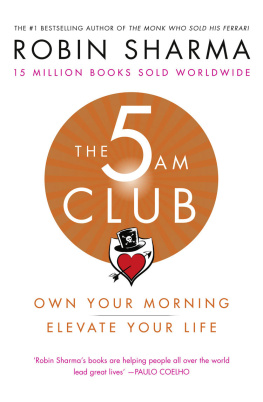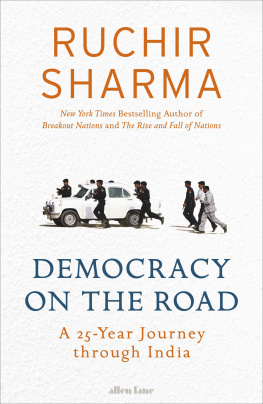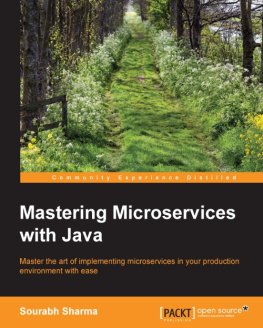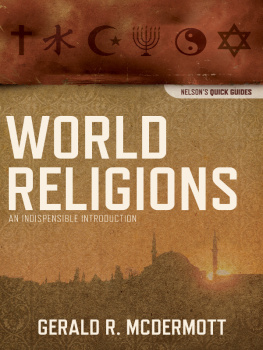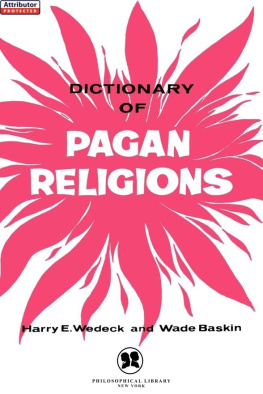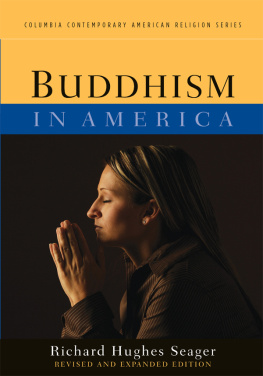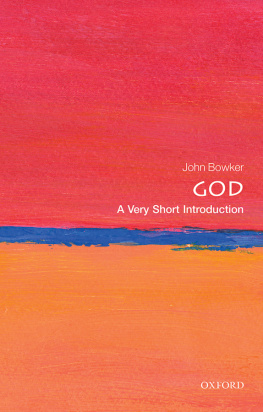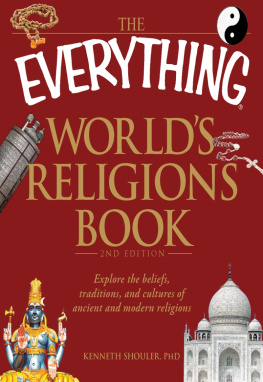Sharma - Our Religions
Here you can read online Sharma - Our Religions full text of the book (entire story) in english for free. Download pdf and epub, get meaning, cover and reviews about this ebook. year: 1993, publisher: HarperCollins, genre: Religion. Description of the work, (preface) as well as reviews are available. Best literature library LitArk.com created for fans of good reading and offers a wide selection of genres:
Romance novel
Science fiction
Adventure
Detective
Science
History
Home and family
Prose
Art
Politics
Computer
Non-fiction
Religion
Business
Children
Humor
Choose a favorite category and find really read worthwhile books. Enjoy immersion in the world of imagination, feel the emotions of the characters or learn something new for yourself, make an fascinating discovery.

- Book:Our Religions
- Author:
- Publisher:HarperCollins
- Genre:
- Year:1993
- Rating:5 / 5
- Favourites:Add to favourites
- Your mark:
- 100
- 1
- 2
- 3
- 4
- 5
Our Religions: summary, description and annotation
We offer to read an annotation, description, summary or preface (depends on what the author of the book "Our Religions" wrote himself). If you haven't found the necessary information about the book — write in the comments, we will try to find it.
An essential introduction to the worlds living religions by experts from each tradition published in conjunction with the 1993 Parliament of the Worlds Religions.
Sharma: author's other books
Who wrote Our Religions? Find out the surname, the name of the author of the book and a list of all author's works by series.
Our Religions — read online for free the complete book (whole text) full work
Below is the text of the book, divided by pages. System saving the place of the last page read, allows you to conveniently read the book "Our Religions" online for free, without having to search again every time where you left off. Put a bookmark, and you can go to the page where you finished reading at any time.
Font size:
Interval:
Bookmark:

Our
Religions
Edited by
Arvind Sharma

for Wilfred Cantwell Smith
Let us never forget that there exists no other religious reality than the faith of the believer. If we really want to understand religion, we must refer exclusively to the believers testimony. What we believe, from our point of view, about the nature or value of other religions, is a reliable testimony to our own faith, or to our own understanding of religious faith; but if our opinion about another religion differs from the opinion and evaluation of the believers, then we are no longer talking about their religion. We have turned aside from historical reality, and are concerned only with ourselves.
W. B. Kristensen
Religionshistorisk studium
(translation by Eric J. Sharpe)
We meet on the mountain height of absolute respect for the religious convictions of each other
Hon. Charles Carroll Bonney
Opening address, September 11, 1893
Worlds Parliament of Religions, Chicago
The world of religion is composed of the religions of the world, seven of whichHinduism, Buddhism, Confucianism, Taoism, Judaism, Christianity, and Islamare presented in the covers of this book. Perhaps no book on the religions of the world can be the final or ultimate one, but it can be unique. This is such a book.
It is unique in several ways. It is unique because each author belongs to the tradition he is writing about, he speaks not only of his tradition, but his standing in the field enables him also to speak for it. Furthermore, poised as he is at the cutting edge of the tradition as it encounters modernity, each author is able to address the contemporary issues the tradition faces in a way that has rarely ever been attempted earlier, much less accomplished. Finally, the fact that all these spokesmen who write about their traditions do so from within the arena of the academic study of religion as it has evolved in the West renders their contribution all the more unique.
Two ends of the spectrum have often been played against each other in the study of religion: that one who knows one religion knows none and that one who knows too many does not know any. This book focuses not at the ends but at the colorful band that lies between these two ends. As the reader explores this band, constituted by the religions of the world, he or she will have to decide whether the various religions of the world are hyphens that unite or dashes that divide, and in doing so will determine the grammar of religious discourse in times to come.
Hinduism
Arvind Sharma
Mahatma Gandhi is acknowledged, even by his critics, as the greatest Hindu of modern times. However, on the evening of January 30, 1948, he was shot to death by a fellow Hindu, Nathuram Godse, for acquiescing in the partition of the country into India and Pakistan. Godse bowed to Gandhi reverentially before shooting him to death, and Gandhi raised his hand in a gesture of forgiveness as he fell. In performing these surreal acts of spiritual chivalry, both acted as they did in the name and spirit of Hinduism. How are we to define a religion that embraces both the victim and the assassin?
Time passes, but paradoxes persist. When Gandhi was killed by Godses bullets, the last word heard to escape his lips was that of Rmaone of the Hindu names for God. Almost half a century later, on December 6, 1992, militant Hindu activists demolished a 464-year-old mosque, virtually with their bare hands, to replace it with a temple dedicated to the same Rma in whose name Gandhi had laid down his life for the cause of Hindu-Muslim unity. Many Hindu women fasted the day after Gandhi died in 1948, but in 1992 many women volunteers were seen crying, presumably with joy, as the domes of the mosque began crumbling under persistent pounding and a crescendo built up with chants of Jai Shr Rma (Hail Lord Rma).
Hinduism does not make it easy for its followers to define it in the best of times, and the journey from Hindu piety to Hindu militancy under the banner of the same god does not make it any easier.
What is true of the gods of Hinduism is also true of the Hindus. The Hindus, no less than their gods, are difficult to pin down. This aspect of Hinduism is best illustrated by the experience of the Muslim savant of the eleventh century, Alberuni, who wrote a masterly treatise on India known by the title of its English translation as Alberunis India. At several points he is constrained to observe: The Hindus differ among themselves or that some Hindus believe until, finally, he bluntly states that there is not one thing that one Hindu says that is not denied by another!
Can such a religion ever be defined? To begin to answer this question, let us first turn this minus into a plus and reflect on what the problem of defining Hinduism itself tells us about Hinduism.
The problem of defining Hinduism has its positive side: It helps to reveal Hinduisms distinctive nature in several ways. First, it tells us that Hinduism has a special relationship with India. After all, most Hindus believe that Rma, like them, was born in India. Second, it shows that Hindus share a special kind of relationship with all Indians, Thus Hinduism is inclusiveparticularly in the Indian context. Hindus today are quite willing to accept Buddhists, Jainas, and Sikhsmembers of some other faiths of Indian originas Hindus, although the Buddhists, Jainas, and Sikhs may demur. Hinduism tends to extend this attitude to the Indian followers of the faiths of even non-Indian origineven though these may demur even more strongly. Pushed to its logical extreme, a Hindu can claim that one is most a Hindu when least a Hindu, that is, when one has dissolved ones Hindu particularity in Hinduisms all-embracing inclusiveness. Hinduism in this extreme formulation paradoxically becomes identical with its own negation! Such a Hindu is like anyone ekeonly more so. Some Hindus are indeed willing to go that far but most still remain tied to India with a sacred thread, however attenuated it might become. Third, the difficulties in defining Hinduism tell us that not only does Hinduism have ethnic roots and tends to be inclusive but also that, in its eagerness to be inclusive and in its tolerance of diversity within, it is willing to overlook contradictions and may even generate them.
Given such diversity, it seems as if Hinduism is constantly seeking some anchor for the floating mass of diverse beliefs and practices that it encompasses. It is as if the storm itself generates a center, not so much that a storm forms around a centerwhich is the more usual way in which religions grow. Several such centers have been suggested and may have functioned as such. In classical India, the Vedasa body of revealed textscame close to occupying that position; Alberuni suggests that belief in reincarnation might have played a similar role in medieval Hinduism; and adherence to caste and the acceptance of the sanctity of the priestly class of brahmins and/or of the cow have also been suggested as constituting such centers. But while indicative of Hinduism in their own ways, none of these features is definitive.
Font size:
Interval:
Bookmark:
Similar books «Our Religions»
Look at similar books to Our Religions. We have selected literature similar in name and meaning in the hope of providing readers with more options to find new, interesting, not yet read works.
Discussion, reviews of the book Our Religions and just readers' own opinions. Leave your comments, write what you think about the work, its meaning or the main characters. Specify what exactly you liked and what you didn't like, and why you think so.


